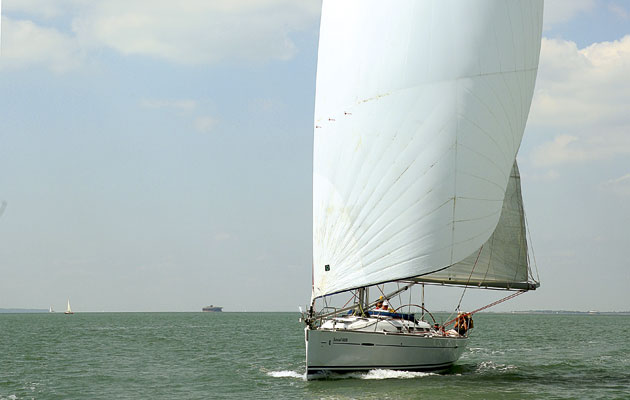Professional navigator Simon Fisher shares his top tips to calibrate your instruments, to make sure you get the most from your electronics onboard
Professional navigator and electronics expert Simon Fisher offers his calibration tips for getting meaningful data:
1. Setting the basics
Make sure that the log and compass are well calibrated and the masthead wind sensor is centred. The calculations your instrument system carries out are based on the input from these key sensors.
Only then can you expect the outputs to be good for the current season.

Once you have calibrated your instruments a whole world of features opens up
When calibrating the log and the compass, pick a light wind day with flat water, steady conditions for a measured mile or a compass swing.
To calibrate the wind instruments you want steady gradient wind conditions so that any asymmetry is caused by the alignment of your wind sensor and not factors such as a sea breeze.
2. Boat speed
There are typically two ways of calibrating your log. If you sail somewhere without tide or current it is usually as simple as changing the calibration number until the boat speed is equal to the speed over ground.
The other method is done by calculating the speed by motoring over a known distance.
Most instrument systems will have this feature and by doing multiple runs at the same speed back and forth it allows you to calculate out any tidal influences.
3. True wind speed
Owing to the acceleration of the wind over the top of your spinnaker and mainsail, your TWS will typically read higher downwind than upwind. In steady conditions, by observing the wind speed just before your turn down wind and after you have hoisted a spinnaker, you can calculate the offset in wind speed.

Your TWS will typically read higher downwind than upwind
This number is always negative and can be put into your TWS calibration table.
Knowing what the wind strength will be for the upwind leg is clearly crucial if you are to make the right call for a headsail change or sail settings such as the genoa car positions.
4. Apparent wind
It is important to ensure that your masthead unit is symmetrical about the boat and there is no offset as a result of the installation or the sensor.
This can be calibrated in two ways; the easiest is to motor head to wind so your Windex is straight down the middle of the boat.
Continues below…
Wind angle should read zero, if not, an offset needs to be applied to the instruments.
It can be tricky to hold your boat exactly head to wind so a more accurate way of doing this is to sail close-hauled on each tack on a day with steady wind, making sure your sails are trimmed the same on each tack and comparing the results.
For all the latest from the sailing world, follow our social media channels Facebook, Twitter and Instagram.
Have you thought about taking out a subscription to Yachting Monthly magazine?
Subscriptions are available in both print and digital editions through our official online shop Magazines Direct and all postage and delivery costs are included.
- Yachting Monthly is packed with all the information you need to help you get the most from your time on the water.
- Take your seamanship to the next level with tips, advice and skills from our expert skippers and sailors
- Impartial in-depth reviews of the latest yachts and equipment will ensure you buy the best whatever your budget
- If you are looking to cruise away with friends Yachting Monthly will give you plenty of ideas of where to sail and anchor




